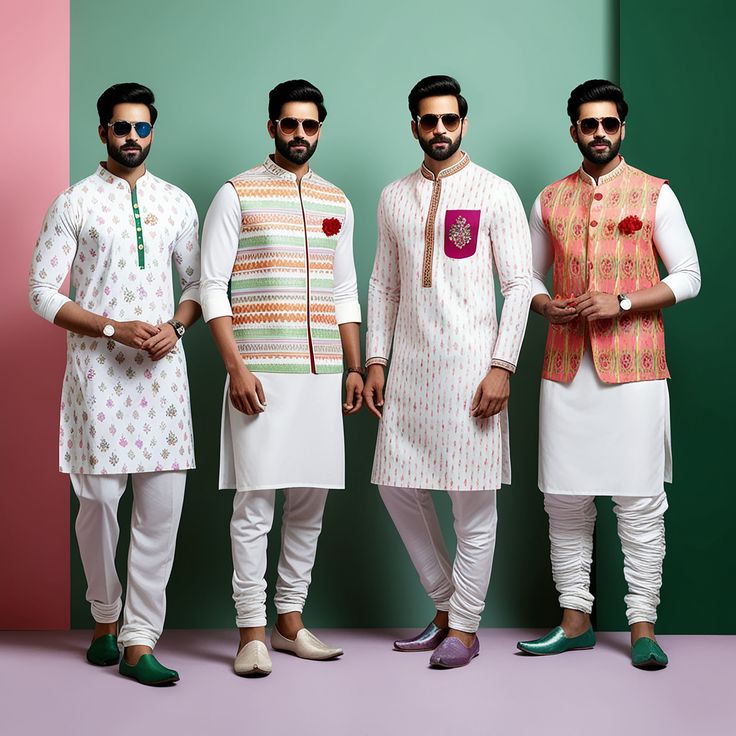
Elegance in Rebellion.
Own the Edge.
The Modern Gentleman’s Guide to Hosting a Diwali Get-Together

There’s something timeless about Diwali evenings. The glow of diyas, the crackle of firecrackers in the distance, friends laughing over food and drinks—it’s a festival that naturally brings people together. But here’s the thing: a Diwali get-together doesn’t just happen. Hosting well requires thought, planning, and the kind of attention to detail that leaves your guests feeling taken care of without you running around like a stressed-out caterer.
For the modern gentleman, hosting Diwali is less about putting on a show and more about creating an experience. A home that’s warm, stylish, and well-prepared sends a subtle message: you’ve got your act together. Whether it’s family dropping by, colleagues, or a close-knit circle of friends, the way you host shapes how people remember the evening.
I’ve hosted both chaotic, last-minute Diwali nights (think disposable plates and uneven lighting) and evenings where every element—from the bar setup to the music—flowed effortlessly. Trust me, it makes a difference. And the good news? You don’t need to spend weeks or a fortune making it happen. With the right approach, you can host a Diwali gathering that feels both festive and masculine, with your own style woven into the details.
Why Hosting Matters More Than You Think
Most guys underestimate the power of being a great host. It’s not about cooking the best food or decorating like an interior designer—it’s about setting the tone.
- A clean, well-decorated space signals respect for your guests.
- Good lighting and music immediately elevate the vibe.
- Small touches—like proper glasses for drinks or a functional seating setup—make people feel comfortable.
Diwali, especially, calls for hospitality that blends tradition with a modern touch. Your guests are there to celebrate, unwind, and connect. If your space helps them do that without friction, you’ve already won.
Step One: Setting the Atmosphere
The first thing guests notice isn’t your outfit or your food—it’s how your space feels.
- Lighting: Go beyond a single tube light. Use diyas, candles, or LED string lights to create layers of warm light. It’s festive, but also sets a relaxed, welcoming tone.
- Decor: Stick to a balance—some traditional pieces like brass diyas or rangoli at the entrance, paired with modern elements like a clean mirror or a statement centerpiece.
- Decluttering: Nothing kills a festive mood like a messy coffee table stacked with remote controls and papers. Keep things minimal but intentional.
One of the simplest upgrades I made last year was adding a Loop Group Glass Full Length Rectangular Shape Mirror near the entryway. Guests naturally stopped there, adjusted their outfits, and it became an unplanned but perfect conversation starter. Sometimes hosting well is just about anticipating what people might need before they even realize it.
Step Three: Food That Doesn’t Tie You Down
You’re not running a restaurant. The key is food that feels festive, easy to share, and doesn’t leave you stuck in the kitchen.
- Finger foods and snacks first—nuts, paneer bites.
- One strong main course—maybe veg biryani or a paneer/with rotis.
- Sweets are non-negotiable—it’s Diwali. Stock laddoos, kaju katli, or even chocolates if you want to modernize it.
When I first hosted, I made the mistake of overcommitting to cooking multiple dishes myself. By the time the food was ready, I was exhausted and barely enjoyed the night. Lesson learned: curate, don’t complicate.
Dressing the Host
Your guests are the show—you’re the anchor. Diwali is not the time for experimentation gone wild. Keep it sharp, keep it comfortable.
- A fitted kurta with tailored trousers works well.
- If you prefer a mandarin-collar shirt in navy, charcoal, or maroon with slim chinos is effortless.
- Footwear matters—clean loafers or minimal sneakers.
- Keep fragrance understated. The last thing guests want is your cologne competing with the aroma of food and incense.
Hosting requires mobility. You’ll be pouring cooldrinks, checking on food, and making introductions. Dress for confidence and movement, not for stiff formality.
The Food Game: Balance Tradition and Modern Comfort
Diwali food has weight. People expect certain classics: samosas, mithai, pakoras, chaat. But you don’t have to stop there. A good host balances tradition with something fresh.
Think of your menu like a playlist—familiar tracks with a few surprises. Offer the expected, but slip in modern bites: mini kebab sliders, avocado chaat cups, or even sushi platters alongside mithai. This blend shows thought and effort.
A few real-world strategies:
- Pre-plate snacks. Guests hover awkwardly when plates aren’t ready. Small bowls with nuts, chakli, or spiced popcorn should be out before anyone arrives.
- Have one showpiece dish. Whether it’s paneer tikka, put energy into one main item people will talk about.
- Don’t overload the table. Too many options feel chaotic. Pick 5–6 solid dishes and do them well.
And don’t forget dessert. Sweets are central to Diwali, but balance sugar with freshness—fruit platters, yogurt-based desserts, or lighter mithai options like kaju katli instead of only laddus.
Entertainment Without Force
Entertainment doesn’t mean blasting Bollywood remixes until midnight. Guests remember flow, not noise.
- Music: Curate a playlist that builds the night. Start mellow—instrumental sitar, soft jazz—then transition into upbeat tracks as the evening deepens.
- Games: Cards or rummy are classics during Diwali, but keep stakes low. It’s about atmosphere, not draining wallets.
- Conversations: A host’s job is connecting people. If two guests don’t know each other, introduce them with a hook (“He’s into photography, you’re into travel—talk about Iceland”). That’s how gatherings become memorable.
Gifting Like a Gentleman
When people leave, they’ll remember how the night ended. A small token makes the difference between a gathering and an experience. You don’t need extravagant hampers. A box of handmade sweets, a premium candle, or even artisanal teas wrapped simply in brown paper with a ribbon feels thoughtful.
If you’re feeling bold, personalize it. A note that says, “Thanks for being part of the night” goes further than another generic Diwali box.
Pulling It All Together
Hosting Diwali with style isn’t about a Pinterest board or following trends. It’s about control over details: how the light falls, how food is served, how people move through your space. The mirrors, lighting, music, and even your clothing—these aren’t random decisions. They’re tools to create comfort and memory.
When guests walk out of your home, they shouldn’t just say, “Nice party.” They should carry a memory of warmth, laughter, and the fact that you set the stage for all of it. That’s what separates a true host from someone who just puts snacks on the table.






